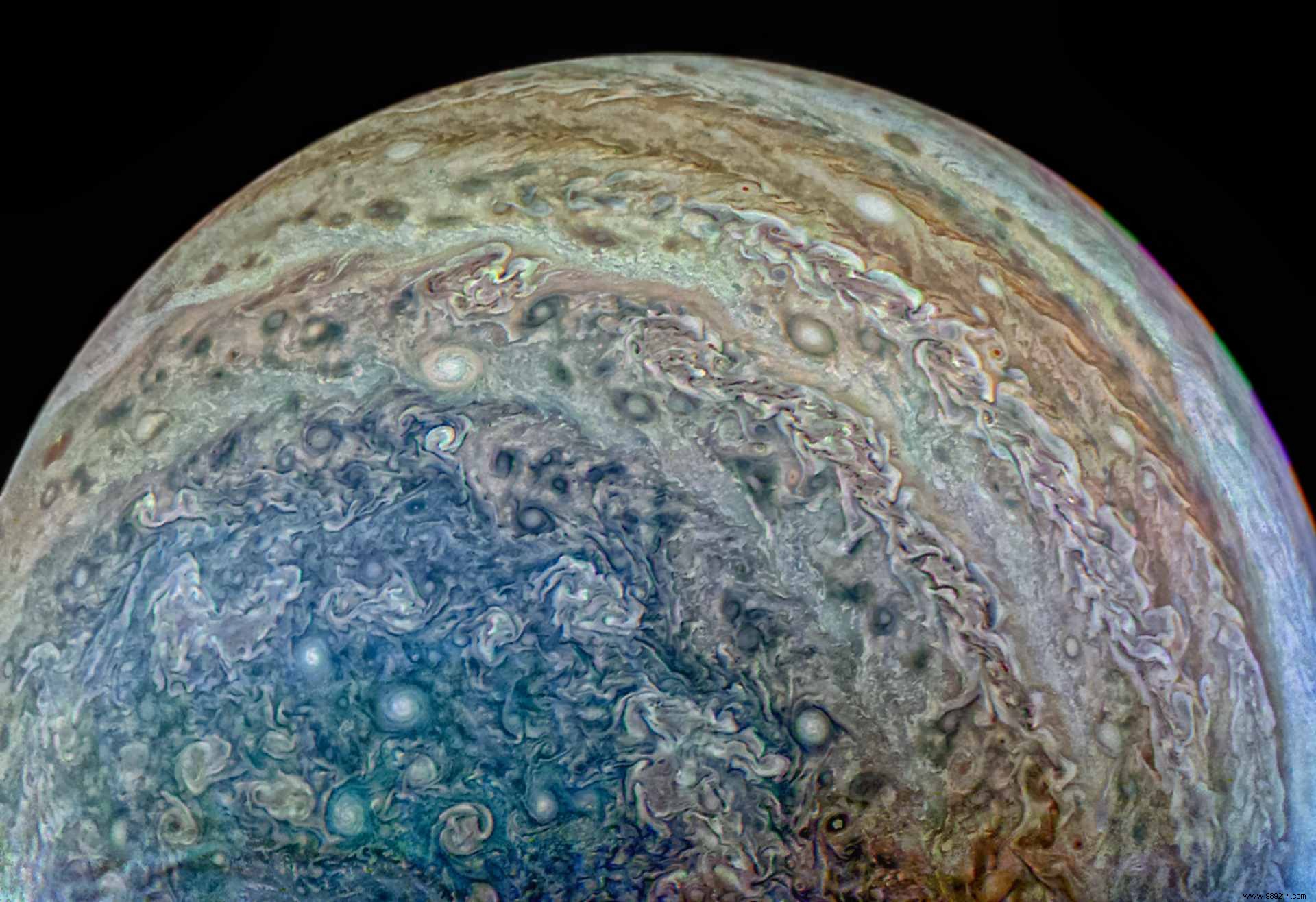Could a spacecraft survive crossing Jupiter? The short answer is no. In the depths of the giant, the temperatures and pressures are so important that no material designed by Man could last long enough.
Jupiter, the largest planet in our system, is mainly composed of hydrogen (about 90% of its atmosphere) and helium (about 10% of the atmosphere) . Traces of water vapor, methane, hydrogen sulphide, neon, oxygen, phosphine, carbon, ethane, sulfur and ammonia are also present. While several probes have ventured around the planet, only one has had the "privilege" of being able to dive into its atmosphere:the Galileo probe. NASA finally lost contact after about an hour, when they had reached the depth of 150 kilometers.
It's unclear how long Galileo lasted then, but it was probably a matter of a few hours, at most. But could we one day send a spacecraft deeper, to the point of being able to cross the planet? According to Leigh Fletcher, from the University of Leicester in the UK, the answer is no.
To give an idea of the pressure at the center of Jupiter, consider this:the Mariana Trough, the deepest on Earth, offers pressures that reach a little more 1000 bar , or more than one ton per square centimeter. Near the center of Jupiter, pressures reach several million bars . Pressure issues aside, temperatures also reach tens of thousands of degrees Celsius .
“At this point, any spacecraft would not just be crushed or melted – it would disintegrate entirely into its constituent atoms” , emphasizes the researcher.

That is, a spacecraft would have no chance of surviving a crossing of Jupiter, especially since after a while, it should come up against its core.
Thanks to the American Juno mission, by measuring how the speed of this probe was accelerated or slowed down by Jupiter's gravitational field, the researchers were indeed able to confirm that Jupiter contained a core by determining the distribution of mass in the depths of the planet.
We still don't know exactly what this core looks like, as it is so difficult to break through the clouds of the giant, but many imagine a dense rocky center coated in melted ice, of a layer of metallic hydrogen itself coated with another layer of molecular hydrogen on top. It is estimated that this core of Jupiter could have a mass of 12 to 45 Earth masses.